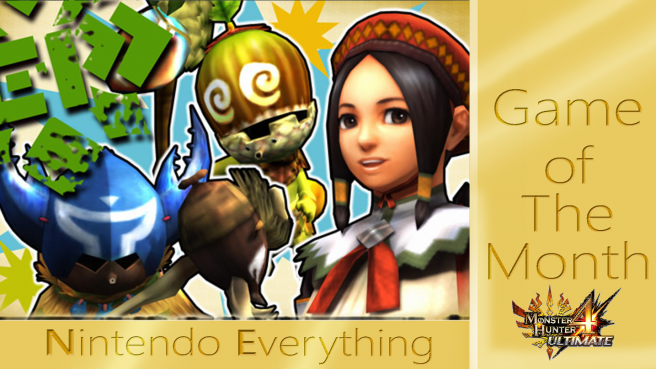[Feature] Returning to Moga – The many improvements of Monster Hunter 4
Of all the games I’ve reviewed for Nintendo Everything over the years, Monster Hunter Tri might be one of the most memorable. Stepping out of Moga Village for the first time was a wonderful moment reminiscent of Richard Attenborough welcoming everyone to Jurassic Park… mostly because there were dinosaurs there. Though the controls and sluggish swordplay took a bit of getting used to, I eventually warmed up to the actual gameplay, giving the game an respectable, yet arbitrary score of 9/10. Now I find myself returning to the hunt with the recently released Monster Hunter 4 Ultimate and it turns out that the series has actually evolved quite a bit since 2010’s Tri. While the games look similar on the surface —if anything Monster Hunter 4 looks like a downgrade, with the visuals scaled back to fit on the tiny 3DS screen— there are a of lot of things that have been changed for the better. I think it’s worth comparing these two entries to see how far the series has progressed in the last few years and some of the ways that Monster Hunter 4 Ultimate improves on the formula.

Monster Hunter 4 Ultimate’s tutorials aren’t better than its predecessor’s because they’re more plentiful, but because they do a better job of teaching the basics while still being engaging. The very opening of the game sees players on a ship being attacked by a colossal monster called the Dah’ren Mohran; it’s a fight that’s impossible to lose, but it’s an exciting start to the game that teaches players the very basics like how to move around, manipulate the camera and gather for items. The fact that Dah’ren doesn’t reappear until the end of the “low rank” quests makes it a fitting start to the game as it’s quite satisfying to fight it for real thirty-odd hours later and have everything comes full circle.
After being introduced to the caravan crew, there’s the usual array of tutorial quests. Cooking stamina-recovering steaks and crafting potions are an essential part of Monster Hunter, so it makes sense that the game teaches this before setting you against larger foes. It is a bit boring for returning players, but thankfully these early quests are very brief and it isn’t long before squaring off against a Seltas and having the game open up. Most of the tutorial text is completely optional and can be easily disabled. By comparison, Monster Hunter Tri forces players to deal with a seemingly unending array of menial tasks like collecting mushrooms and slaying tiny monsters before finally getting the chance to take on a Great Jaggi.
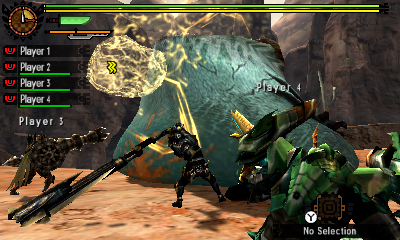
When revisiting Monster Hunter Tri for this article, the thing that was hardest to go back to was the fact that all the weapons I used in the latest game are all missing. I just can’t go back to using a lance that isn’t also a gun! In comparison to the latest game’s arsenal of fourteen weapons, Tri has only the weak starting lineup of the Great Sword, Lance, Hammer and Sword and Shield. Bowguns are still there, but I found them far too complicated in Tri, since they had a confusing customization style that involved mixing and matching different parts. Even the Switch Axe and Long Sword, two weapons that were introduced in Tri, take a while to unlock and I didn’t end up trying them out until Monster Hunter 3 Ultimate came out. Given the high learning curve, it’s tough to figure out a new moveset after settling on a single weapon, so having every option available from the start seems ideal. Not only does Monster Hunter 4 give players more weapon options for a more varied playstyle, it also does a better job of introducing the weapons with a series of optional tutorial quests that let you practice moves against a Great Jaggi before moving on to an actually challenging foe.
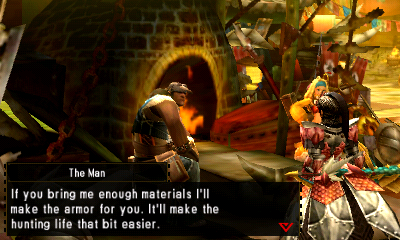
While I wouldn’t call Monster Hunter Tri’s translation bad at all, the localization team at 8-4 have been improving on the game’s writing with each installment. Monster Hunter 4 Ultimate is filled with hilarious dialogue that gives more personality to all the residents of this monster-infested world. Yeah, some of the humor is a bit lame, but you can’t have a whole race of cats without making a few cat puns. Beyond the localization, I liked that Monster Hunter 4 gave your hunter a whole caravan of characters to interact with. Though you move between different locations, the Caravaneer, Guildmarm and the blacksmith known only as “The Man” are always there to help with the hunting business. Teamwork is a bit part of Monster Hunter, so it’s nice that even when playing single player your hunter has a whole team of memorable characters offering assistance. I don’t really remember any of the supporting characters in Tri outside of the Guild Sweetheart (come on Capcom, give us the DLC that lets her hang out in our hunter’s house!). Monster Hunter 4’s characters also seem a lot more helpful than those in previous games, giving out plenty of hints on systems that previously went unexplained, like how Skills work. Not everything is covered, which is to be expected when the game has a guidebook that’s large enough to be a new weapon class, but it’s another feature that makes the game more accessible for newcomers.

Monster Hunter 4 Ultimate has a total of 98 monsters to fight, and while the vast majority of them are from previous entries, it’s still an impressive menagerie that makes for a steadier difficulty curve. It may have been because it was my first Monster Hunter game, but I found Tri’s difficulty to be overwhelming. Each new fight was like beating my head against a wall until I finally memorized every attack pattern and while this made the eventual victory incredibly satisfying, I prefer the later games’ larger range of monsters that doesn’t have players jumping straight from a Great Jaggi to a rude Rathian-summoning Quropeco. Though the quest progression is much smoother, Monster Hunter 4 Ultimate’s difficulty level ends up being much higher due to the addition of tough G-Rank quests. I can’t imagine I’ll put in enough hours to unlock them until the game’s servers go offline, but it’s nice that even if that happens I’ll still be able to play them solo. The worst thing about returning to Tri is that the hardest quests in the game all disappeared along with the online functionality.
Monster Hunter Tri had comparatively few monsters to fight, but they were almost all new inclusions that made for fun, challenging battles (minus all the ones fought underwater, but we’ll get to that in a bit). With Tri still fresh in many players’ minds, it makes sense that the developers avoided reusing them in this new title, but instead the quests are kind of “padded out” with fights with creatures from the first two entries in the series. It makes me wish there were more new monsters introduced in Monster Hunter 4, because most of the new fights are really fun (but not you, Najarala). Creatures like Nerscylla and Kecha Wacha make interesting use of terrain, providing a nice challenge without having any obnoxious gimmicks. Going from these fantastic fights to a bunch of barely-distinguishable raptors is quite jarring, though all the old timers are at least improved by the new gameplay mechanics. How did anyone even fight Gravios before you could stab it in the back?
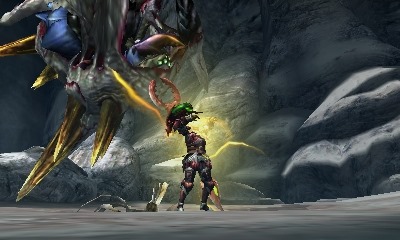
At the end of the day, climbing and riding monsters makes for far more enjoyable battles than slugging it out underwater. I didn’t really mind them at the time, but in retrospect the aquatic combat in Monster Hunter Tri is the worst part of the game. Flailing around a bunch of boring underwater arenas and hoping you don’t get destroyed by a Gobul’s absurd hitbox simply isn’t fun – not compared to jumping off a cliff and toppling a monster with a single weapon swing. Ceadeus, you will not be missed. The new sense of verticality that comes with Monster Hunter 4’s locations makes players really think about their position. It adds an extra level of strategy even if the actual mechanics of climbing and cutting monsters make battles a whole lot easier.
Another new addition that spices up even the encounters with older monsters is the frenzy virus spewed by that fearsome Gore Magala featured on the cover. This virus sends infected monsters into a powerful enraged state, adding a nice element of unpredictability to the game in a good way that doesn’t involve Deviljho constantly showing up to ruin your day (though I’m sure he’s still around). There’s usually some indication that a quest will have an outbreak of the virus, but it’s still a big surprise when a monster suddenly starts breathing black smoke and proceeds to send you passed out on a cart back to camp.
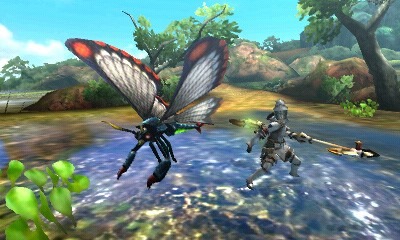
Also unpredictable is the new hunting ground, the Everwood. This randomly-generated area does have some issues (there’s nothing more frustrating than having a wounded monster make a run for it) but it’s one of the most exciting additions to the game. Monster Hunter Tri had a similar system where random monsters would show up in the Deserted Island area, but the Everwood is much more rewarding as hunting there can sometimes net you rare, random weapons and armour along with the usual carves. This element of randomness and the allure of collecting loot makes Monster Hunter 4 feel like a completely different game.
Really the only things about Monster Hunter 4 Ultimate that feel like a big step back are the visuals and the lack of voice chat. Well and that I find the new Palico partners more annoying than my little buddy Cha-Cha, but that’s all down to personal preference. Monster Hunter 4 Ultimate is a huge improvement over all those hunts from 2010 and it’s definitely the best point to jump into the series.
